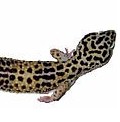Where do you begin with baby leopard gecko care? A mate of mine purchased a pair of leopard geckos for pets. These geckos were quite young. According to him, it will take time before it grew accustomed to him, until they did. He has gained talents on looking after his pets.
But he was stunned when all of a sudden, his female gecko bears four, and now he has 6, including the elders. What is fascinating was that he became a newb all over again since he was never used to taking care of child geckos? Being a gecko-lover I am, these are some guiding principles in effectively taking care of baby leopard geckos.
From 45 to 60 days, droplets of moisture will be seen on the shell of a leopard gecko egg. The shell will ultimately begin to shrink and partially collapse, indicating that the egg is beginning to hatch. Baby geckos possess "egg tooth", a bony structure at the end of their snout that they are going to use to smash their eggs shells. This "egg tooth" will fall after one or two days. Their skin will shed inside 24 hours and they won't be in a position to eat only after the 1st shedding.
Separate a baby leopard gecko to its elders by providing it with another enclosure. It is best to keep two children in one enclosure. Crowded enclosures may affect their expansion or breed competition among these infant geckos. A tiny aquarium or tank is acceptable as their shelter since this could prevent them from crawling out of their enclosures.
Moreover, create acceptable hides in their enclosures for their basic use. Lessen possible cause for stress of your baby geckos. Continuing touching or holding could be nerve-wrangling for them. Try to enhance trust between you and your pet. Be relaxed and chilled whenever handling them. Open your palm and gently place it on the floor of the enclosure.
When he's confident, the gecko will crawl right into your hands. If he permits, hold the gecko using both hands, supporting his body on either side. Forestall him being surprised when he's raised up. He might immediately leap out of your hand and the fall will seriously harm him.
Use caution in handling your gecko. Avoid holding its tail. It may shed off if touched the wrongly. The tail contains large fat content which the gecko uses. Once detached, it might affect his health. It is advisable to feed your baby leopard geckos with small amounts of crickets, mealworms or locusts. Place it on shallow containers and put it in the enclosure. It is suggested to tear the rear feet of insects to make them less mobile.
As tough as they look, these leopard gecko babies still require our care and feelings. Though they may at first look merciless and brute, they're still babies who need incessant attention, especially food, shelter and security from us. And being the gecko-lovers that we are, why would we deprive them of that?
